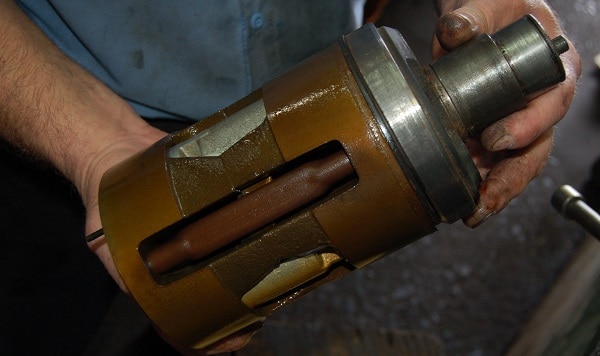How to deal with a compressor oil viscosity change
By Richard Hawkins, MACS Contributor
We have covered why a replacement compressor might have a different viscosity oil from its OEM counterpart. Now it is time to dig a little deeper into that subject and look at some possible situations that might arise that can affect our service work.
First, if you are dealing with a catastrophic compressor failure where system flushing and component replacement removes all the oil from the system, then it is a matter of just installing the correct quantity of the oil that is specified for the replacement compressor. But there is also something else to consider: If there is a label on the vehicle that specifies the OEM viscosity oil, then it would be best to affix another label near it or over it which indicates the viscosity of the oil which is now in the system. It would also be a good idea to put some information in the owner’s manual about the change (both to help ensure that the correct viscosity oil is used if future A/C service work is required).

Now, what if only a compressor is being replaced and it is necessary to do only an oil balance? (No doubt if a drier has been in use for a considerable amount of time, then it should be replaced. As a result, there really are not that many situations where it is permissible to replace just the compressor. However, one of those situations would be where a compressor and drier had been replaced and the compressor had a case leak or front shaft seal leak and had to be replaced almost right away.) If you were working on a system with an 8-ounce oil capacity that contained PAG 150 and 2 ounces of oil were drained from the original compressor, that that would mean installing the replacement compressor with 2 ounces of oil in it. If the replacement compressor called for PAG 46, adding 2 ounces of PAG 46 to a system that contains 6 ounces of PAG 150 is going to result in a mixture of oil that is much thicker than PAG 46. Doing some math yields the following results: (150 X 6 =900), (46 X 2 =92), (900 + 92 = 992), (992 ÷ 8 = 124) So you end up with a PAG 124.
Engineers spend a considerable amount of time and effort determining the correct oil for compressors and it is best to follow the recommendations supplied with the specific units. So, using a 124-viscosity oil in a compressor that is designed for 46 would not be advisable. It could also void the warranty.
What are the options (to get the viscosity correct)? There are only two:
1. Flush the entire system and replace the drier and use 8 ounces of PAG 46.
2. Return the replacement compressor that uses the PAG 46 and have your supplier get one for you that uses PAG 150.

Leave a Reply